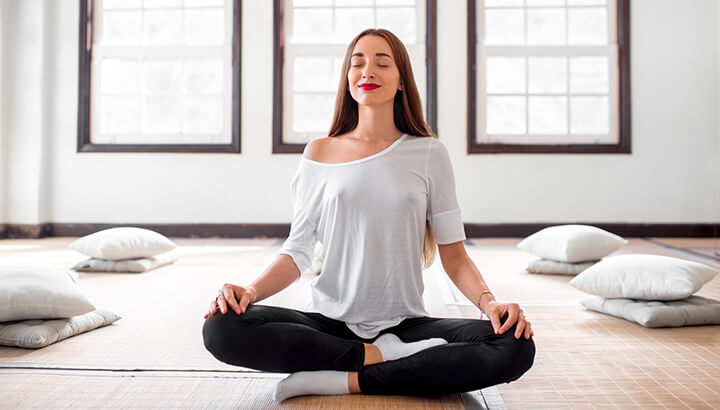A big part of meditation is the process of bringing the mind into the present moment. This can be accomplished in many ways, as demonstrated by the many various styles, traditions and schools of meditation out there. Each one teaches and interprets meditation a bit differently, and different styles are good fits for different people. To find yours, all you have to do is try a few and see what really vibes for you.
When meditating, one very useful tool to get the most out of it is to have a focal point — somewhere to place your attention while you relax and center your mind. This is often the breath (which I’ll discuss below), but other focal points may work well, too. The following are five to try.
1. Breath
This is the primary meditation focal point which many traditions and schools of meditation focus on. When you’re centering yourself in the present, paying attention to your breathing can help a lot. Different schools teach it differently, but for a general idea, what you do is track your breath as it makes its way through your body.
Feel your breath entering your lungs and diaphragm as you slowly inhale. Feel what it’s like to be saturated with air. Feel the air release and let your body relax as you exhale. Pay special attention to the second or two after you complete exhaling (take a pause before you take your next breath). Notice the space between breaths. Notice how still it is.
As a side note, I’ll share a helpful piece of advice I once learned. I used to attend Theravada Buddhist meditation sessions, and the monk who was leading the guided meditation once said that he finds it useful to direct his attention to the way air travels through the space at the top of his nose. I’ve used this technique, and it does help a lot.
2. Heartbeat
Heartbeat is constant and rhythmic, and it can be a perfect meditative focal point. The key to this type of focused meditation may be a very quiet room. Sit comfortably in a place where you can experience silence… or as near to silence as possible, so that you can hear your heart. Relax your body and notice the feeling of your heart beating. Breathe slowly and deeply, and hone into the thuds continually reverberating through your body.
If you get deeper into this, you may become increasingly aware of your circulatory system, and may wish to visualize blood flowing through your veins.
3. Visualization
Speaking of visualization, this technique can be very helpful for various types of purpose-driven meditation sessions. One example could be a healing meditation. Working through a painful emotional experience can be very mentally and physically stressful, so allowing your healing meditation to be guided by a visual image of a calm, serene place where you feel safe can aid you greatly.
Similarly, if you are trying to work through a certain puzzle in your life, visualizing your passing thoughts as pieces in a giant puzzle may help you to gain some perspective.
4. Mantra
The use of mantra in meditation is prevalent in Theravada Buddhist meditation and multiple other traditions. Some styles use gongs, some use chants and others may use instruments. The process of repeating a mantra, or listening to a rhythmic gong, may help to center your mind on the task at hand — rising up above the sea of churning thoughts into the daylight of the present.
5. Music
Mantra may not be the right fit for everyone. If it’s not for you, but you’d still like to accentuate your meditation session with sound, try music. Different types are centering for different people; choose what makes you feel free, open and focused. For some, this may be a very rhythmic piece. For others, maybe an orchestra. Yet others may enjoy off-beat rhythms and experimental pieces. If you’re in the latter camp, check out Icelandic music sometime.
What other meditation focal points do you use in your sessions?
— Meditation Daily







